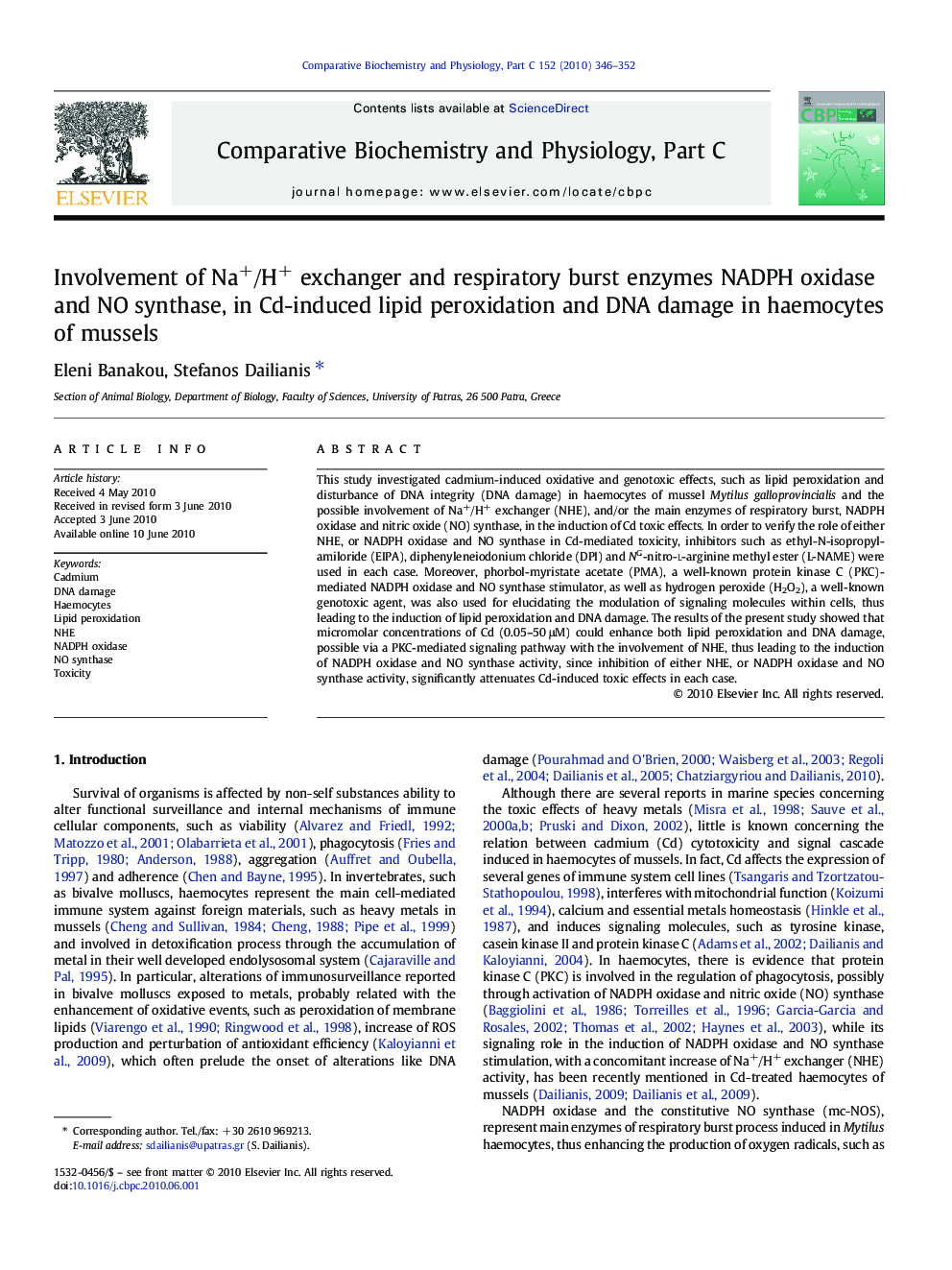| Article ID | Journal | Published Year | Pages | File Type |
|---|---|---|---|---|
| 1977615 | Comparative Biochemistry and Physiology Part C: Toxicology & Pharmacology | 2010 | 7 Pages |
This study investigated cadmium-induced oxidative and genotoxic effects, such as lipid peroxidation and disturbance of DNA integrity (DNA damage) in haemocytes of mussel Mytilus galloprovincialis and the possible involvement of Na+/H+ exchanger (NHE), and/or the main enzymes of respiratory burst, NADPH oxidase and nitric oxide (NO) synthase, in the induction of Cd toxic effects. In order to verify the role of either NHE, or NADPH oxidase and NO synthase in Cd-mediated toxicity, inhibitors such as ethyl-N-isopropyl-amiloride (EIPA), diphenyleneiodonium chloride (DPI) and NG-nitro-l-arginine methyl ester (L-NAME) were used in each case. Moreover, phorbol-myristate acetate (PMA), a well-known protein kinase C (PKC)-mediated NADPH oxidase and NO synthase stimulator, as well as hydrogen peroxide (H2O2), a well-known genotoxic agent, was also used for elucidating the modulation of signaling molecules within cells, thus leading to the induction of lipid peroxidation and DNA damage. The results of the present study showed that micromolar concentrations of Cd (0.05–50 μΜ) could enhance both lipid peroxidation and DNA damage, possible via a PKC-mediated signaling pathway with the involvement of NHE, thus leading to the induction of NADPH oxidase and NO synthase activity, since inhibition of either NHE, or NADPH oxidase and NO synthase activity, significantly attenuates Cd-induced toxic effects in each case.
